As the green begins flourishing and spring is fully sprung, forage for these different medicinal wild herbs and weeds to add to your apothecary. Early spring growth has the highest mineral content, and best tonic impact of the herb’s life cycle.
Sarah here, growing up the springtime foraging was what I was taught first. After the cold, dim days of winter, the spring was the time to get outside and start finding greens and herbs. Not only did it get us out of the house and into the yard as soon as the first green sprouts of dandelions began, but it was also super fun. Dandelions are one of the easiest weeds to identify, even for youngsters, and little fingers make quick work of picking flowers, leaves, and buds.
I still have a soft spot, and taste buds, for young dandelion greens and they are the first ones I watch for when the snow melt begins. Even if you don’t want to memorize a list of twelve, just learning these two herbs can help too.
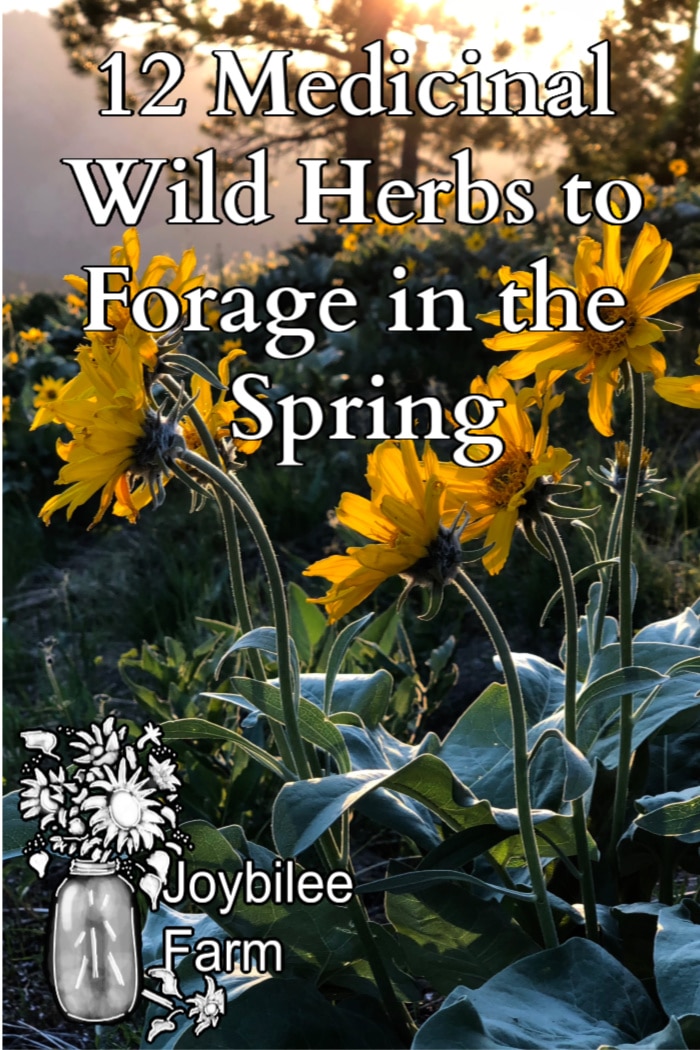
Early spring foraging that you don’t want to miss
If you are foraging, harvest plants only from areas that have not been sprayed and that you have permission to harvest in. Your own yard and garden are the best areas to start wild harvesting. Avoid gathering within 20 feet of roadways, or thoroughfares as chemicals can leach from those areas. If you decide to harvest in public forests and crown land, check for spray notices and do not harvest if there is a spray notice in the area.
Ensure you make a positive identification of the plants in question before using them for herbal or food purposes. Use a field guide if you are unsure, a phone app, or check with local friends who might know what plants are in your area. Never take more than 10% of a given plant in a given area, to make sure that it can come back in future years.
Horsetail:

This weedy rush grows in damp areas and near ponds. The stems are jointed, and slightly brittle. The plant reproduces by spores and the bushy “female” parts are the first to open in the spring followed by the spear-like male plants. They grow most abundantly in early spring, but you can also find flushes throughout the year in damp areas and after periods of heavy precipitation.
Horsetail is a vital source of silica, but due to it’s tough texture is best used as an infusion as part of tea, broth, or soup. Similar to how bayleaf is used for flavor but not consumed.
Dandelion leaves, roots, and flowers

Ubiquitous in yards, gardens, parks, and cracks in the sidewalk, this hardy formerly European plant is a great spring foraging option. Dandelions have a distinctive rosette growing pattern, with long, heavily toothed, smooth leaves. The flowers grow in the center of the rosette on hollow stems, and are a distinctive brilliant yellow. All parts of the dandelion plant are edible. The size of the leaves will vary depending on how much water they receive, and if they are in fertile soil or not.
Dandelion look-alikes include Cat’s Paw, which has similar flowers and growing pattern but the leaves are hairy and not smooth. Dandelion always has smooth, non-hairy leaves.
Dandelion greens are great in springtime salads, dandelion pesto, and more. Dandelion flowers can be used for tea, wine, and even bath bombs. Dandelion roots are useful in herbal tinctures, and as a coffee substitute.
Yarrow leaves:

Yarrow is a distinctive herb, and the strongly medicinal scent is one of it’s easily identifying markers. Young yarrow leaves look like soft feathery fronds growing in large clusters soon after the snow melts. There are a few look-a-likes to yarrow, notably anything in the wild carrot family, but the medicinal scent is distinctive to the yarrow family. Yarrow has many uses. It is diaphoretic and will help break a fever. It is also useful for blood clots, bruising, and my family has used it to help internal bruising from concussions and falls. Use it as a hot tea, a tincture, a cold compress.
For more information on yarrow, see this article.
Cottonwood buds
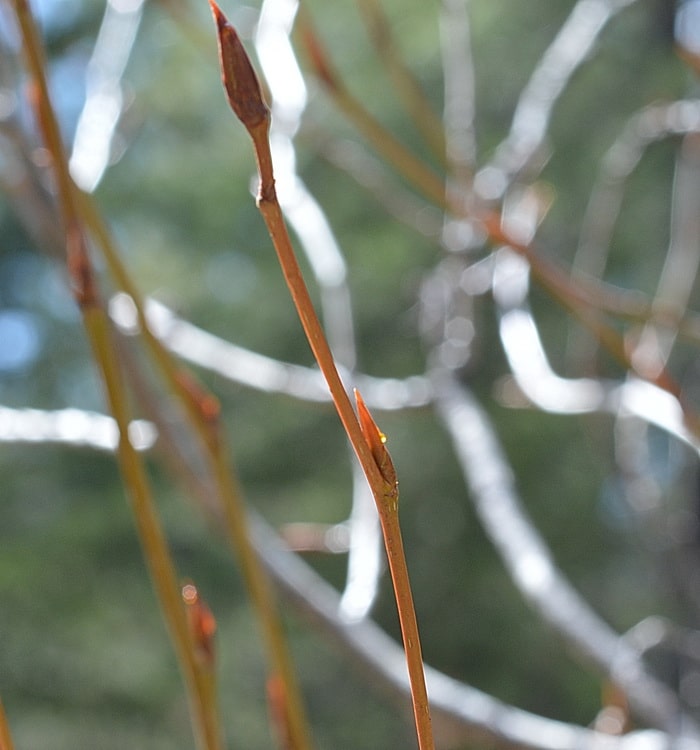
Identify cottonwood trees during the year to make harvesting cottonwood buds easier in the spring. Cottonwood buds are most frequently infused in oil for use in salves, but the young leaves can be dried and used in tea as a mild form of pain relief. Do not ingest or use cottonwood topically if you are allergic to aspirin family of pain killers.
Pick cottonwood buds by hand in the early morning. Ideally you want to harvest the cottonwood buds before leaf-break, while they are tight and full of resin. The resin is what is infused into the oil. Cottonwood buds have a distinctly sweet smell, often termed “balm of Gilead.”
Mullein leaf
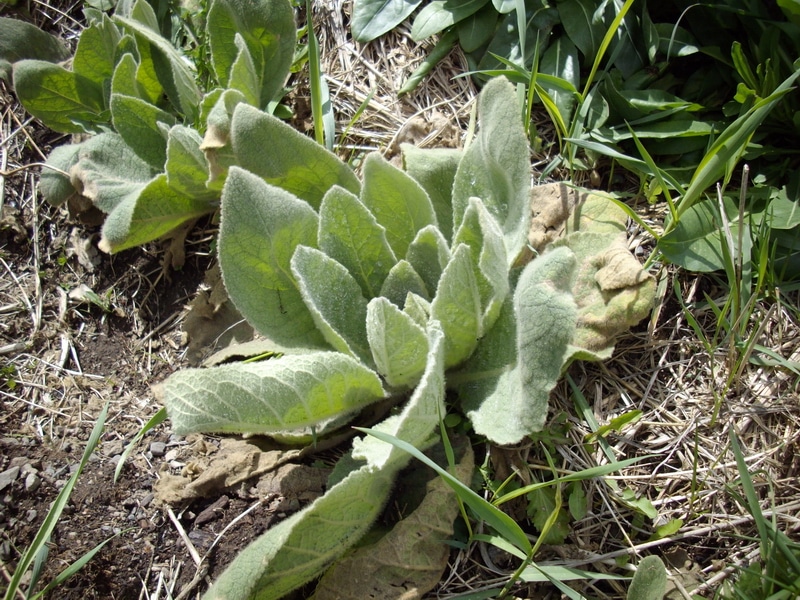
Early spring rosettes of fuzzy mullein flourish in recently disturbed areas and broken ground. Mullein is a wild herb recommended for respiratory complaints. The leaves can be dried for later use. If you desire to infuse mullein oil from leaves, they should be dried before being infused. If you are wild harvesting only take a small number of leaves per rosette, unless it is abundant in your location. In the fall, the towering stalks of mullein flowers can also be harvested, for ear ache oil, and other remedies.
Violets
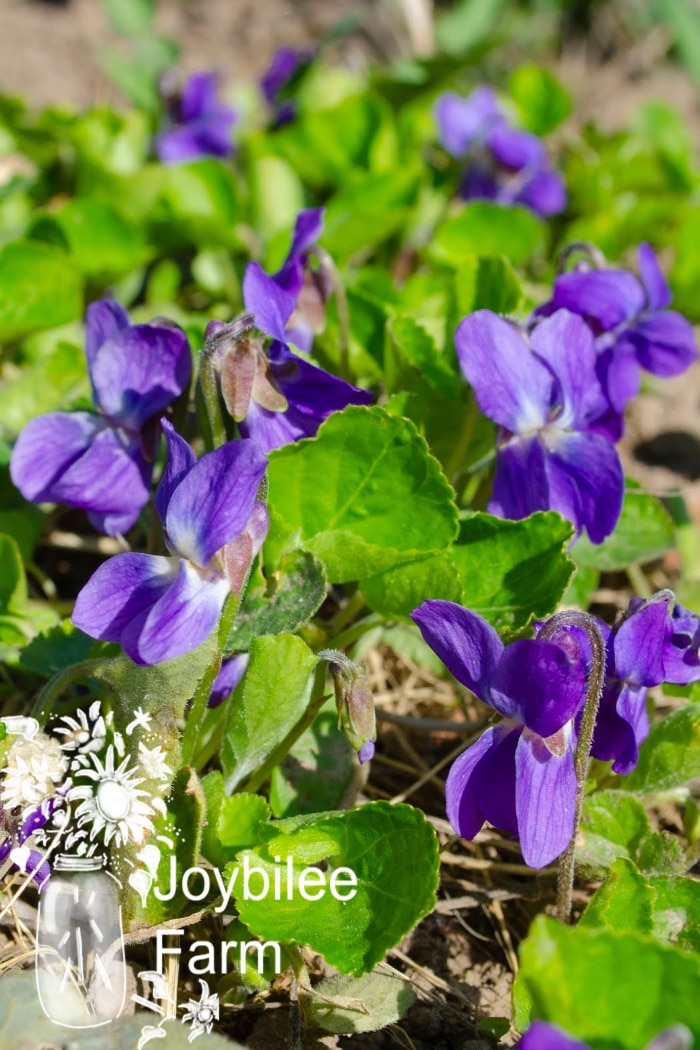
There are many different types of violets that grow wild in the spring. These include common wood violet, a light purple flower that flourishes in lawns, woods, and grasslands. There are also yellow stream bank violets, and white wood violets that can sometimes be spotted. All violets have similar properties, and are edible. Some people like adding violets to their spring green salads, or candying the flowers, but violet can also be consumed as a potherb, or used in poultices for rashes and eczema as a fresh wild herb. It is rich in mucilage and soothing and cooling for hot, dry conditions.
Nettle sprigs and root
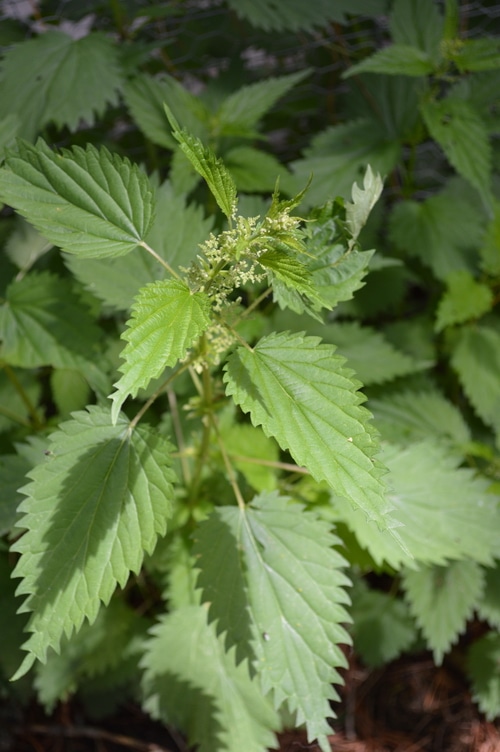
Stinging nettle is a highly valuable tonic herb for spring harvest. Young nettle shoots are rich in vitamins and minerals, particularly iron and calcium, that may be in low supply in early spring. Stinging nettles are perfectly edible, just not as a salad green! Use as a pot-herb, in stir-fry, dried for tea, or even in a smoothie (I promise, it doesn’t sting!).
Ox-Eye Daisy Leaves
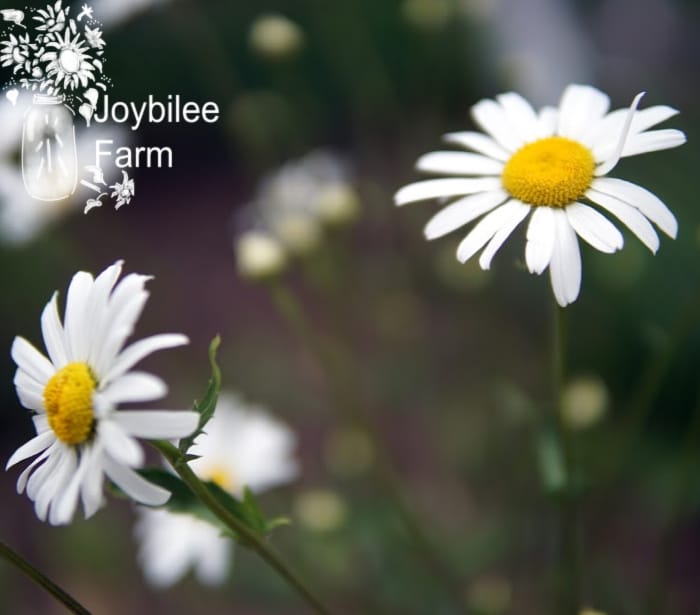
This wild herb is a fun one for wild spring green salads. Ox-eye daisy leaves have a faintly sweet anise-fennel flavor and add a lot to wild spring green salads. In many areas ox-eye daisy is also classified as an invasive species, so you don’t have to be worried about over-harvesting the leaves. Daisy flowers, in summer, can be harvested and dried to use like chamomile with a similar relaxing and soothing effect. The flower and leaves are antioxidant and may also be used in skin care preparations.
Cattail shoots
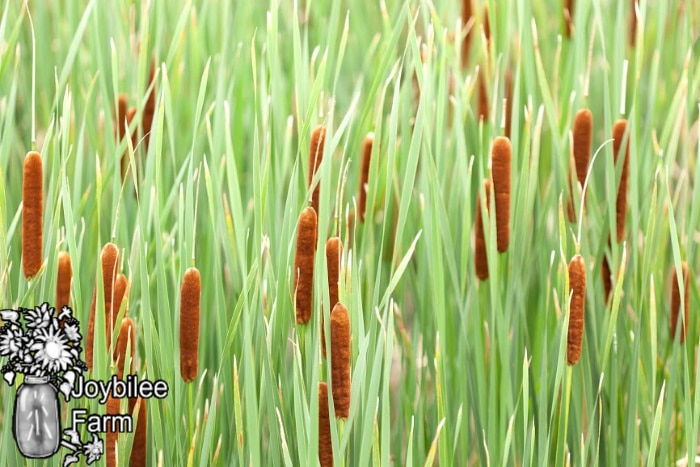
Young green fronds of cat-tail can be harvested in the early spring to use as a pot-herb. You want to strip off the outer leaves, and only consume the tender inner core. The cattail core can be eaten cooked like leeks or asparagus, raw like cucumber or celery, or even pickled if you want to try that. As the spring progresses, you can also harvest the young flower heads while still encased in leaves. Boiled, those flower shoots resemble corn on the cob, though the flavor is different. Pollen of the cattail plant, which can be harvested without damaging any part of the plant, is also recommended as a flour substitute. Don’t consume cattail pollen if you are allergic to pollen though!
Take care if harvesting cattails that you do not harvest from the roadside, as the plant can accumulate toxins. This is more relevant for the early spring shoots, and the roots which are also edible, as they have the highest mineral content of the plant’s growing season. It is only a tiny bit less relevant for the flower stalks and pollen. This wild herb may also be protected, depending on where you live, so you should check the local regulations before wild harvesting. Harvest from a private pond or stream with permission, as the cattails can be invasive in small areas and the owners may like having them thinned out a bit.
Cleavers
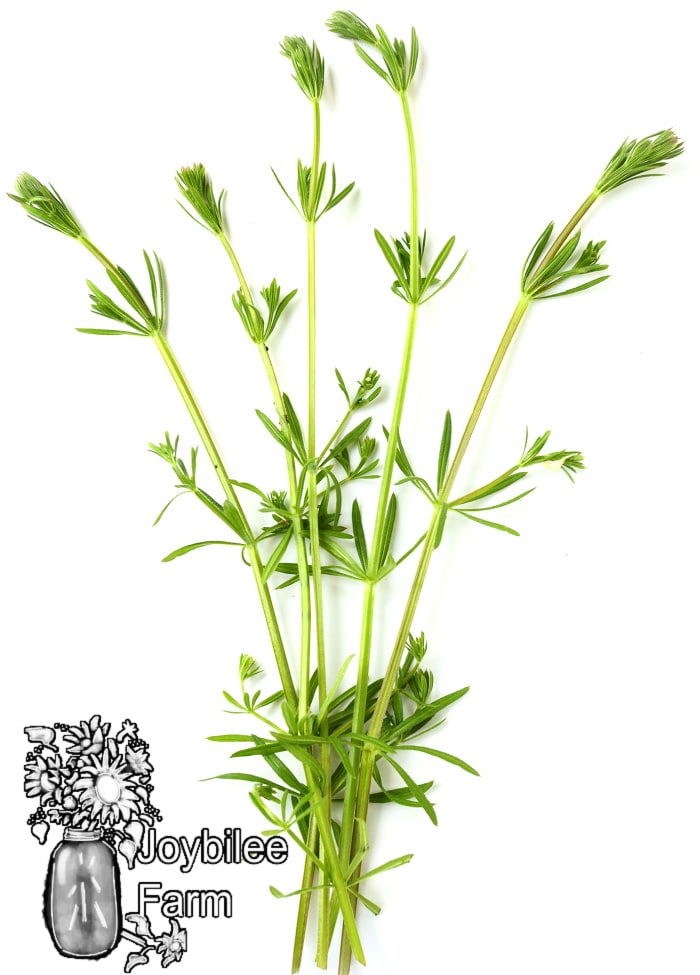
This is best known as a velcro-like garden weed. The square stemmed plant has whirls of leaves around the stem in a rough hand shape, and grows out in a vine like pattern. Due the the clinging tendency of the leaves and stems, the plant is easy to spot. Due to the coarse nature of this wild herb, it is often recommended to juice it, or use it in a tincture over consuming it fresh.
Harvest the tips for cooking as a green in the early spring when the plants are tender. Pick thick handfuls of fresh greens down by the base of the plant. You need a lot of cleavers to make a small amount of juice. Nutritive, classic for spring cleansing and tonic. Long cooking time can soften the hairs enough to render them harmless, steaming is also effective. Combine with other spring greens, or cook like you would spinach.
It is a lymphatic herb that is often used dried as a tea, for support in those with skin conditions.
Arnica flowers:
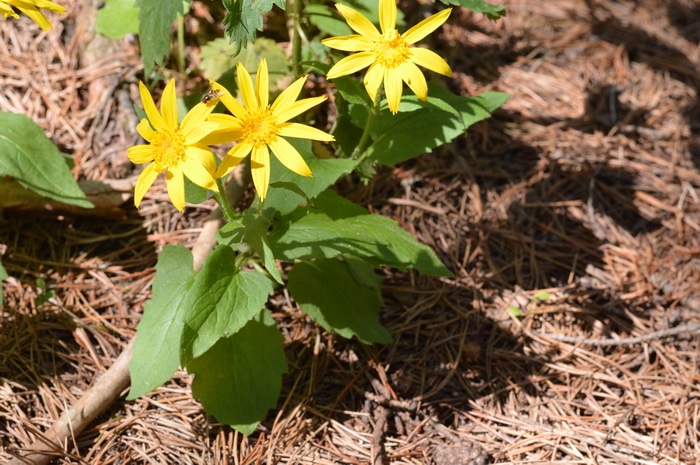
Arnica Montana is a plant of pine forests, and waste areas. It prefers dappled shade, and the cool of forests. It’s look-alike, Arrow leaf Balsam root grows in open ground, on hillsides and fields. Arnica Montana has large, showy, yellow to orange daisy-like flower, a hairy stem, opposite heart-shaped leaves, and grows about 12 inches tall. It can be up to 24 inches tall in rich soil. Some varieties of Arnica have hairy leaves in addition to hairy stems.
Arnica should not be used internally, or on broken skin. Instead, the newly opened flowers can be harvested, wilted for a few hours, and infused in oil. The oil is good for bruises, strains, and sprains. If you have a bruise that also has broken skin, use yarrow in preference to Arnica. For more information on Arnica Montana check out Arnica Montana for Bruises, Strains, and Sprains.
Arrow Leaf Balsam Root flowers:
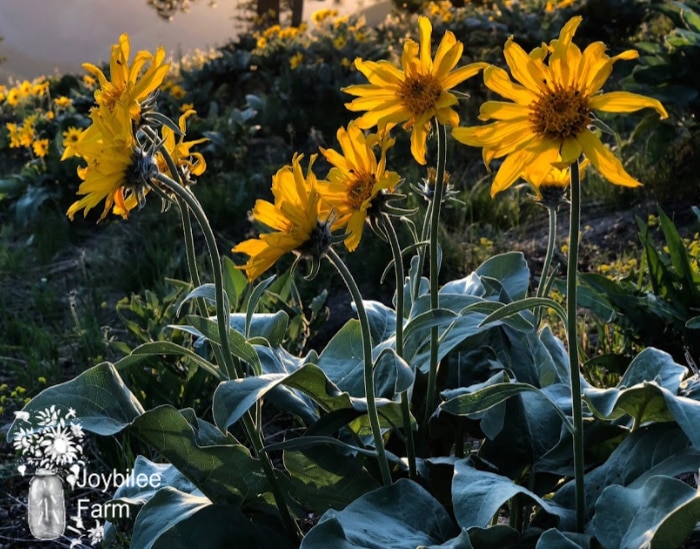
Arrow leaf balsam root appears as a mid spring yellow flower alongside roads, in open fields, on open mountainsides, and in abandoned lots. The flowers have a similar appearance to sunflowers, and it is sometimes termed a sunflower. Arrow leaf balsam root has grey-green leaves, with a faint brush of hairs over the leaves and stems. The flowers are 1-2 feet tall and grow in clusters surrounded by the heart-shaped leaves. The plant clusters can be up to three feet across.
The plant is slow growing, despite it’s comparative abundance, and should be harvested with care. Arrow leaved balsam root is a drying herb, an expectorant, antimicrobial, diaphoretic, and immuno-modulator. The root is used in an alcohol tincture, or in a warm oil infusion for topical use. The root is highly resinous, hence the use of a warm extraction for the oil. You can use the flowers, however, in skin care preparations. They are antioxidant and anti-inflammatory.
Wild herbs are a great addition to your garden raised, or mail ordered, herbal collections. Add these beneficial wild plants and herbs to your collection this season, and have fun foraging in the wild.
Learn more about using wild herbs for health and wellness from my Book
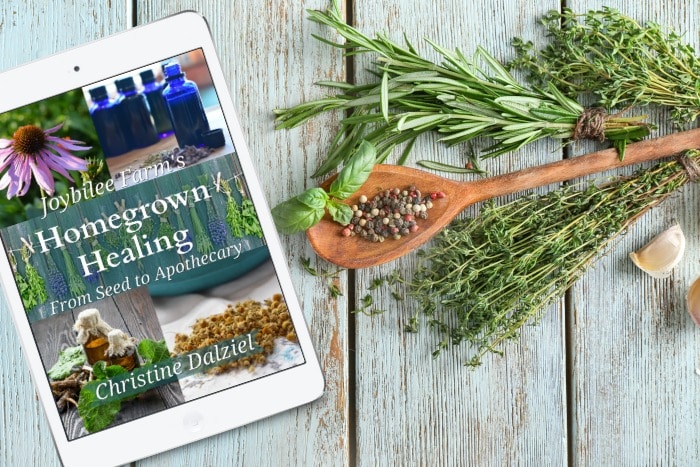
Homegrown Healing From Seed to Apothecary
My book Homegrown Healing From Seed to Apothecary will help you grow healing herbs in your own garden. Focusing on the easiest plants for beginners to grow, Homegrown Healing From Seed to Apothecary covers 30 plants, recommended by professional herbalists, that can be grown in the temperate zone. Initial garden preparation, garden design and harvesting tips lead the novice herbalist into early success. Choose which herbs to grow, learn how to use these herbs for your family’s health and wellness using the guidance in my book. You can find out more about this useful guide to growing more herbs and using them strategically here.




Leave a Reply